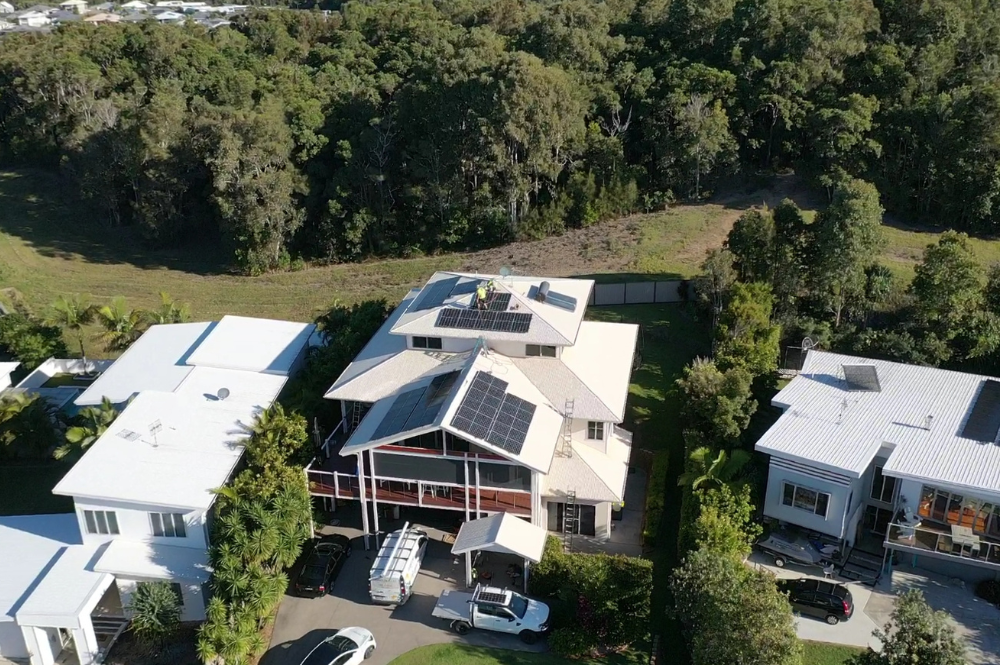Are you considering installing a solar system at your home? We understand that the decision-making process for installing solar can be overwhelming. So we’ve pulled together a list of key considerations to help you better understand the process, and exactly what to expect before your installation.
Explore financial incentives, financial options, and return on investment
The great thing about solar power in Australia, is that more often than not, the government is incentivising the uptake. So, get familiar with the rebates and incentives that you could be eligible for. Not only can these incentives assist with the cost of installation, but they can potentially provide ongoing energy bill savings to you, too. From state-specific incentives and rebates, feed-in tariffs, small-scale technology certificates (STCs) and tax incentives, get to know more about what’s on offer to you from here.
In addition to government incentives, tariffs, STCs and tax incentives, there’s also many attractive buy now, pay later financing options on the market to help you cover the cost. Get to know more about solar loans and payment plans here.
When it comes to return on investment, a residential solar system can provide significant financial benefits in the long run. Discover how to calculate your long-term cost savings here, so you can make the most informed decision. Did you know that a solar system can also increase the value of your property? At this stage of the process, it’s also worthwhile understanding the potentially positive impacts of your home value too. You can learn more about this here.
Assess your energy consumption (now, and into the future)
Get to really know your energy usage. By understanding your energy usage, you can identify areas where you can optimise energy efficiency (and save money) both before and after your installation!
There’s a couple of ways you can get an insight. Most energy providers offer tech-savvy apps these days, that help you track your energy usage in real time. You can get to know your overall energy usage, your seasonal trends, and if you have a smart meter, get to know your usage per appliance type too! Alternatively, get to know your energy bill. Find out how many kilowatt-hours (kWh) of electricity you’re using each month. For example: Your bill shows that you used 23.71 kwH of electricity each day (on average). That makes your monthly average 721.2 kWh (where 23.71 kWh per day x 365 days in a year / 12 months in a year).
By understanding your monthly energy usage, you can start to get an idea of how much electricity your solar system will need to generate, to meet your needs. Don’t forget to estimate your future energy needs too, so you can better predict the size of the solar system you will need.
While we’re on the topic, you can learn how to conduct your own energy audit here, and discover other easy ways to reduce your current energy consumption here, too.
Consider your overall system capacity
Naturally, most people seek to answer “How many solar panels do I need?” and “What type of solar panels do I need?”. Thanks to advancements in technology, residential solar panels come in a wide range of sizes and designs, from a number of providers. This diversity ensures you can find the perfect fit for your home. But the number, type and size of solar panels required, is usually less relevant than the overall capacity of the system. Because more panels doesn’t necessarily translate to more energy. Focus on the capacity and performance of the system you require (remember, getting to know your average energy consumption from your most recent energy bills, helps to guide this figure).
During the initial assessment we provide to all customers, we gain a comprehensive understanding of your current energy usage, your solar goals, and the unique aspects of your property. This information enables us to design a solar system that maximizes your long-term investment and aligns with your requirements. So if this step in particular feels a little overwhelming, we naturally cover this for you once you’ve decided to reach out to us!
Evaluate roof suitability and orientation
The condition and orientation of your roof also play a vital role in the efficiency of your solar panels. As mentioned above, we do evaluate this for you during our initial assessment, but it doesn’t hurt for you to understand this now too. In Australia, a north-facing roof will usually generate the most energy. If you require a larger system for your energy needs, this may mean you’ll require more roof area for installation. Similarly, if space is limited, a more compact system might be the right consideration for you.
Get to know the installation process
Once you’ve decided to proceed with your residential solar system, it’s a relatively straightforward process! Our team of specialists will arrange a suitable date and time with you. Installation typically includes the fitting of new solar panels to your roof, connecting these to an inverter or battery, and testing the system to ensure everything is running smoothly. Depending on the complexity of the solar plan for your home, this process only takes a few days to complete.
While not the intention of this article, but if you’re feeling curious about the post-installation process too, you can do so here!
Ready to get started?
Installing a residential solar system offers numerous benefits, from reducing your environmental impact to achieving long-term energy savings. By understanding what to research and expect before your installation, you can make an informed decision and embark on a smooth transition to solar power with us. We’re with you every step of the way on this and we pride ourselves on providing exceptional service and expertise to make your solar panel installation experience as seamless as possible.
Call us today on 1300 4 SOLAR to ask us any questions throughout this process, or to get started!


Leave A Comment